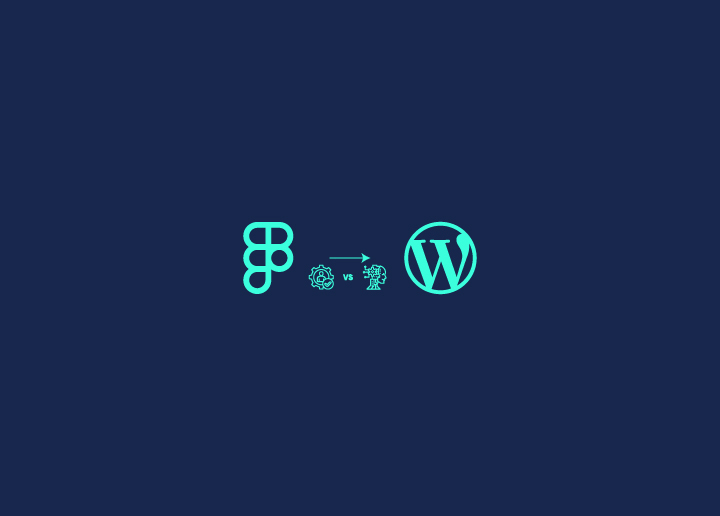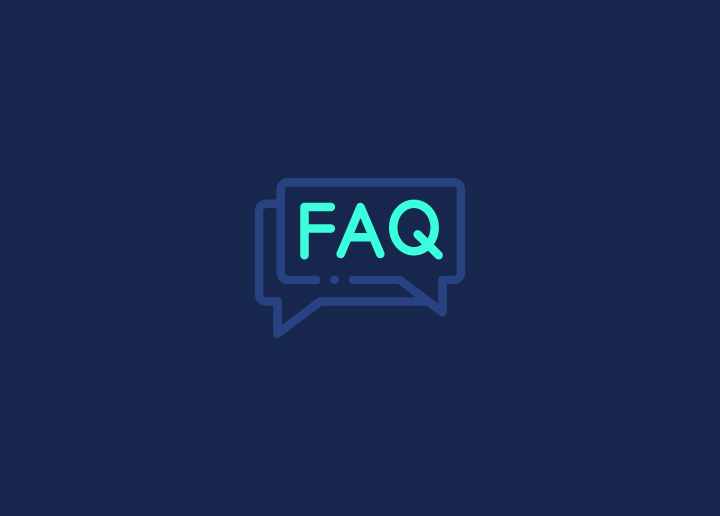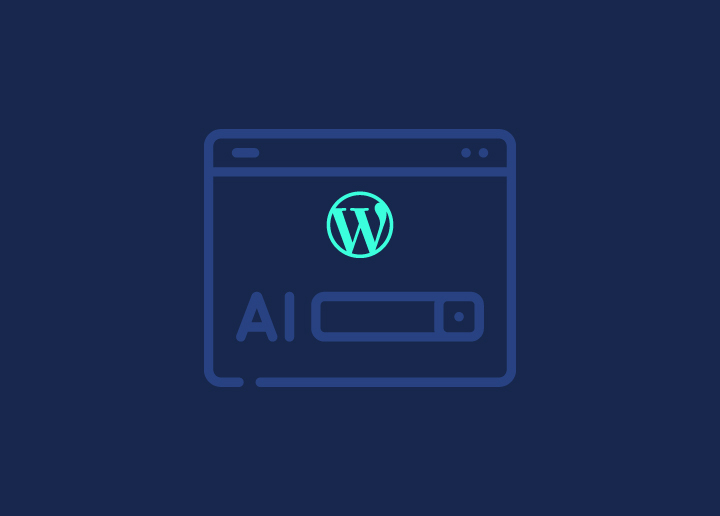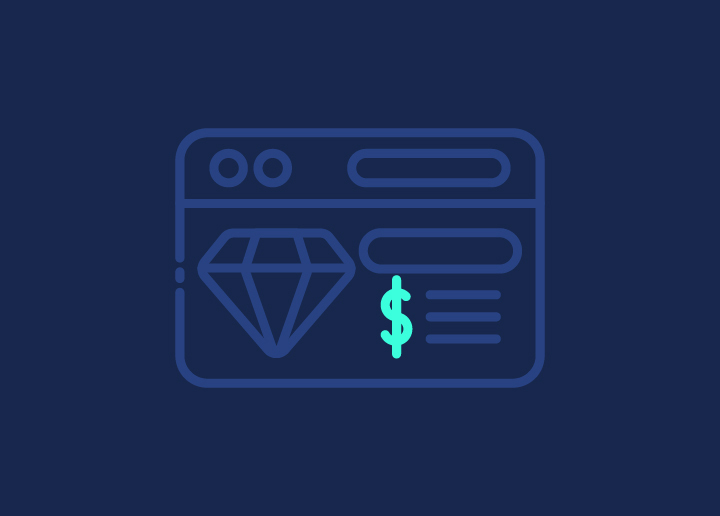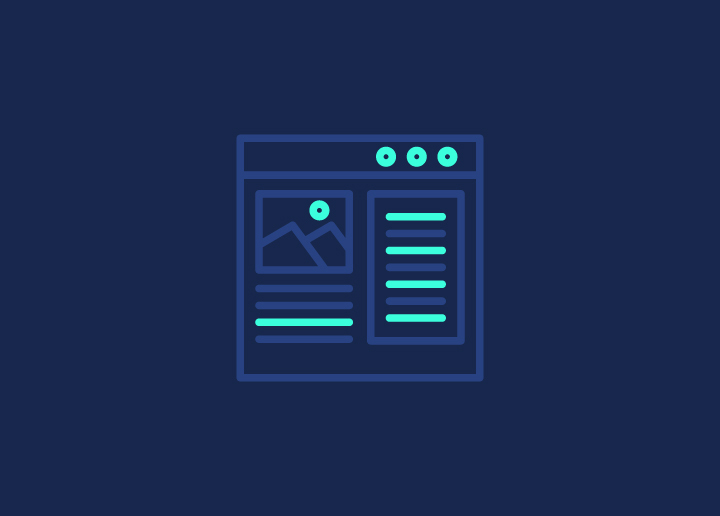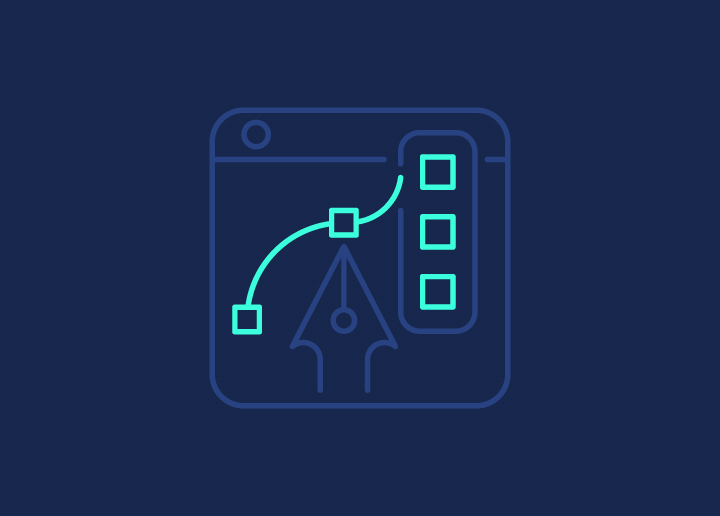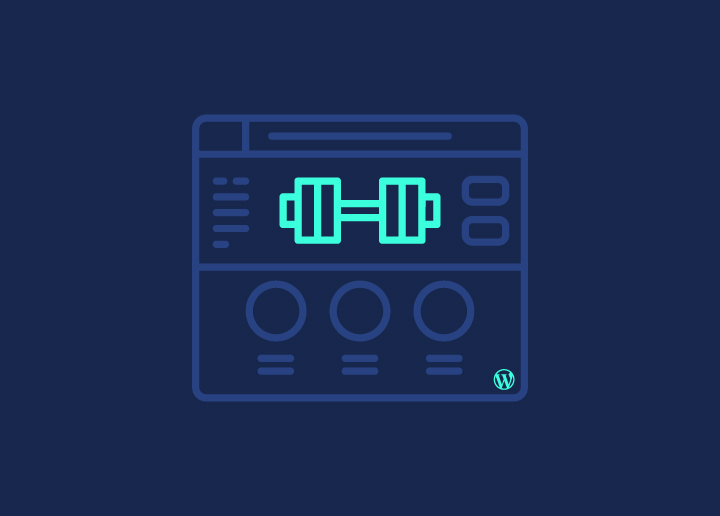Redesigning a website can be like redecorating your home—it’s exciting, but also a bit nerve-wracking. You’re probably wondering: “Where do I even start? Will it improve my business? Can I pull this off without pulling out my hair?”The short answer: yes, you can. With the right steps, a good plan, and some insider tips, you can turn your site into a sleek, high-performing masterpiece that your users (and Google) will love.
In this guide, we’ll break it down for you: how to know when it’s the right time to take professional WordPress website redesign services, the steps you need to take before diving in, and how to implement that redesign without losing your mind. Let’s get started!
Contents
ToggleIs It Time to Redesign Your WordPress Website?
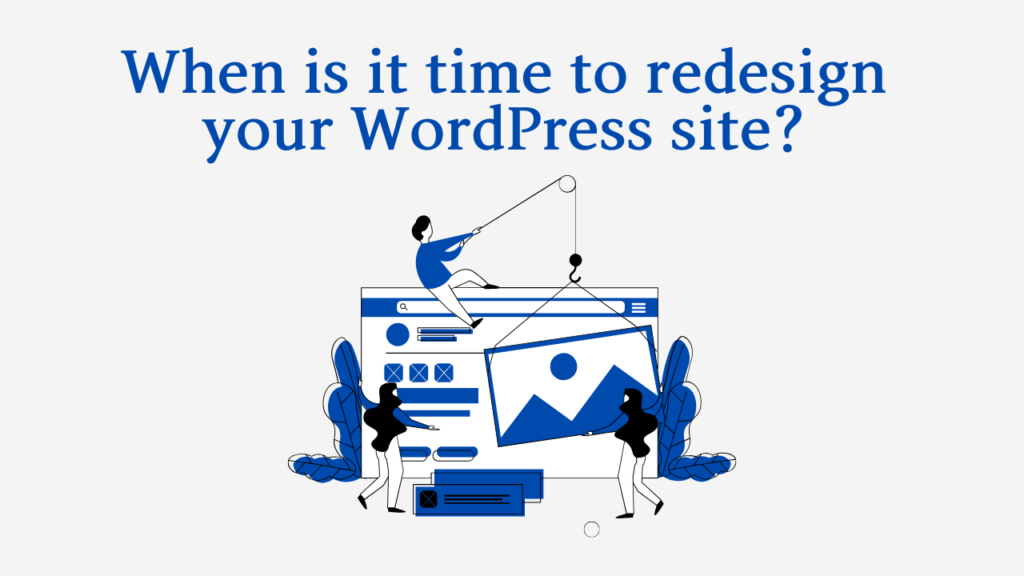
You might be asking yourself, “Is my website actually that bad?” or “Maybe it’s fine for now, right?” Let’s be real: your gut feeling probably knows the answer already. However, if you need a little extra push to help you decide, here are the key signs it’s time to roll up your sleeves and redesign:
- SEO is MIA: If your website has slowly been drifting down the Google rankings, or worse—never really showed up—this is a big red flag. An outdated or poorly structured website can crush your SEO, making it nearly impossible for customers to find you.
- Visitors leave faster than they arrive: If your bounce rate is sky-high, it means users are landing on your site and immediately thinking, “No thanks.” Whether it’s the website design, speed, or overall user experience, something’s driving them away, and that’s not good for business.
- Your design feels ancient: Website design trends are like fashion trends that change fast. What looked cool and cutting-edge five years ago might now make your site look like it’s stuck in a time capsule. A fresh, modern design not only wows visitors but also builds trust in your brand.
- The site takes forever to load: We live in a world where people have less patience than ever. If your site takes more than a few seconds to load, visitors will hit that back button faster than you can say, “Bye, traffic.” Worse still, slow sites can tank your SEO.
Related: How to Speed Up WordPress Page Loading Time
If any of these scenarios sound familiar, it’s time to take action. A redesign could be just the thing your site needs to stay competitive and grow your business.
Transform Your Website, Transform Your Business!
Your website is the heartbeat of your brand. If it’s outdated, slow, or not converting, you’re losing customers. Don’t settle for less!
First Things First: Preparing for Your WordPress Website Redesign
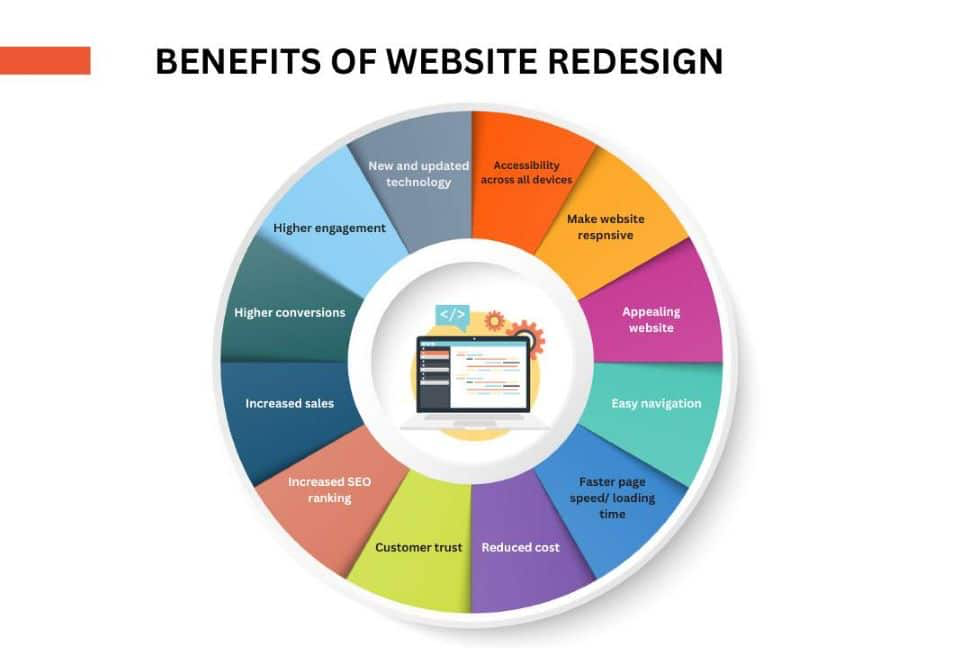
Now that you’ve decided it’s time to redesign, you’re probably eager to dive in and start changing everything. But, hold up! A little preparation goes a long way. Think of it like cooking a gourmet meal—you wouldn’t start without gathering all your ingredients, right? The same goes for your WordPress website redesign.
Set Clear Redesign Goals (Yes, Actual Goals)
Redesigning your website without specific goals is like baking a cake without a recipe—you’ll end up with a mess. Before you start picking new themes or playing with colors, define your objectives. What do you actually want to achieve with this redesign?
Here are some examples to consider:
- Boost SEO and organic traffic: Is your current website lagging in the search results? Maybe it’s not optimized for SEO. A redesign can help restructure your content and optimize your site to attract more traffic from search engines.
- Enhance functionality: Maybe your current site lacks essential features—like e-commerce capabilities, a robust blog, or better navigation—and you want to make it more user-friendly.
- Modernize the design: Perhaps your brand’s overall aesthetic has evolved, but your website hasn’t caught up. A redesign can help align your online presence with your new brand direction and make it visually appealing.
Make sure you write down your goals. Without a clear target, it’s easy to get lost in the process and make changes that don’t actually solve your problems. Your goals will serve as the foundation for every decision you make going forward.
Read: Designed for Success: How Product UI/UX Enhances Customer Engagement
Backup Your Existing WordPress Website (Seriously, Don’t Skip This)
Imagine this: You’ve spent hours tweaking, testing, and perfecting your site’s redesign. And then—something goes wrong. A plugin conflict, a theme gone haywire, or even worse, a server crash. Everything you worked on? Gone in an instant.
Sounds like a nightmare, right? But it doesn’t have to be. Backing up your site before making any changes is your safety net. It ensures that if anything goes wrong, you can revert to the original version without any loss of data or functionality.
Use plugins like Blogvault or BackupBuddy to easily create a full backup of your website. Store the backup on a cloud service like Google Drive or Dropbox. Trust me, you’ll sleep better knowing your content, images, and settings are safe.
Explore: Best WordPress Backup Plugin
Audit Your Current WordPress Website Like a Detective
Before you even think about redesigning, you need to know what’s working and what’s not. It’s like spring cleaning—you can’t make improvements if you don’t know where the clutter is. Conduct a full audit of your website, covering the following areas:
- Performance Audit: How fast is your site? Speed is everything these days. Use website speed test tools like Free Website Speed Test or Google PageSpeed Insights to find out if your site’s loading times are causing user frustration. If it’s slow, figure out why (heavy images, outdated plugins, too many scripts).
Read: How to Test Website Speed?
- Content Audit: Is your content outdated, poorly structured, or irrelevant? Look at your analytics—what pages are performing well, and which ones aren’t? You’ll want to keep the good stuff and overhaul or remove the bad.
- SEO Audit: How’s your site’s SEO health? Are there broken links? Missing meta descriptions? Poorly optimized images? Use tools like Screaming Frog to crawl your site and find all the areas that need improvement.
- Design Audit: Does your current design still match your brand’s identity? Is it user-friendly? Look at your site from the perspective of a first-time visitor. If it feels clunky or out of date, it’s time for a change.
Once you’ve completed your audit, you’ll have a clear picture of what you’re working with. It’s like knowing where all the cracks are before you start patching them up.
Read: How Much Does a Website Design Cost
Structuring the Ultimate WordPress Redesign Project: Roll Up Your Sleeves
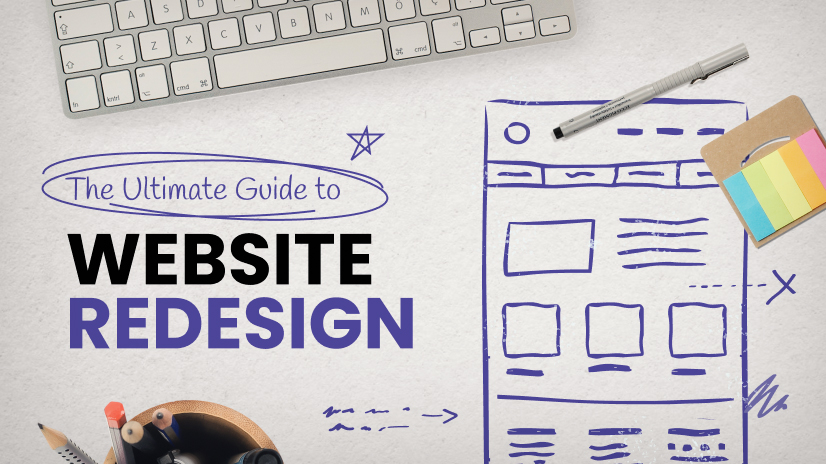
Okay, now that you’ve done your homework, it’s time to roll up your sleeves. Structuring your redesign project is key to keeping things organized and on track. This is where you plan out what changes you’re going to make and how you’re going to make them.
Reimagine Your Site’s Content Like a Master Chef
Think of your website like a perfectly plated dish—it should be easy to navigate, visually appealing, and leave visitors wanting more. But, if your current content structure feels chaotic, it’s time for a cleanup.
- Create wireframes: Wireframes are simple, visual blueprints of your site’s layout. They show where each element (like your header, main content, and CTA buttons) will go, and they help you plan out how users will flow through your site. You can use tools like Figma to create wireframes.
Related: Everything Developers Need to Know About Figma
- Streamline navigation: One of the quickest ways to frustrate visitors is with confusing navigation. Simplify your menus, reduce the number of clicks it takes to get to key pages, and make sure your most important content is easy to find.
- Map the user journey: Visitors should flow naturally through your website, from landing on your homepage to converting (whether that’s filling out a form, making a purchase, or signing up for a newsletter). Guide them with clear, intuitive content pathways.
Learn: Best White Label Website Design Agencies
Build Mockups That Bring Your Vision to Life
Now that your content structure is laid out, it’s time to visualize what your website will actually look like. Mockups are detailed, high-fidelity representations of your site’s final design, showing off your fonts, colors, images, and layout in full effect.
Tools like Sketch and Figma are perfect for this stage. Mockups let you play around with the design elements to see what works before you get into the actual website development. Think of it as test-driving your design before you commit.
Some key things to focus on during this phase:
- Make sure your design aligns with your brand: Your website should feel like an extension of your brand. Consistency in colors, fonts, and imagery is key.
- Check readability: Make sure your text is legible, and don’t overcrowd the page with too many elements. White space is your friend—it gives your content room to breathe and improves overall readability.
- Ensure it’s user-friendly: Even the most beautiful WordPress website won’t work if it’s not easy to use. Pay close attention to the placement of buttons, forms, and navigation elements. Every click should feel intentional and intuitive.
Don’t Forget About SEO (Seriously, It’s Important)
Redesigning your website is a golden opportunity to improve your SEO, but it’s also where things can go wrong if you’re not careful. A lot of people make the mistake of focusing solely on design and forgetting about the SEO groundwork that’s already been laid.
Here’s how to keep your SEO intact during a redesign:
- Preserve your existing URLs: If you have to change any URLs, make sure to set up 301 redirects from the old ones to the new ones. This will preserve your SEO rankings and ensure you don’t lose any valuable traffic.
- Optimize your new content: As you add new content or update old pages, make sure they’re SEO-friendly. Include targeted keywords, optimize image alt tags, and update meta descriptions to match your goals.
- Improve your site’s speed: Search engines reward fast websites. Optimize your new design to ensure it loads quickly. This could mean compressing images, using lazy loading, or choosing a lightweight theme that doesn’t bog down your site.
Know More: Critical SEO Trends to Follow
Design Elements That Will Make Your WordPress Redesign Pop
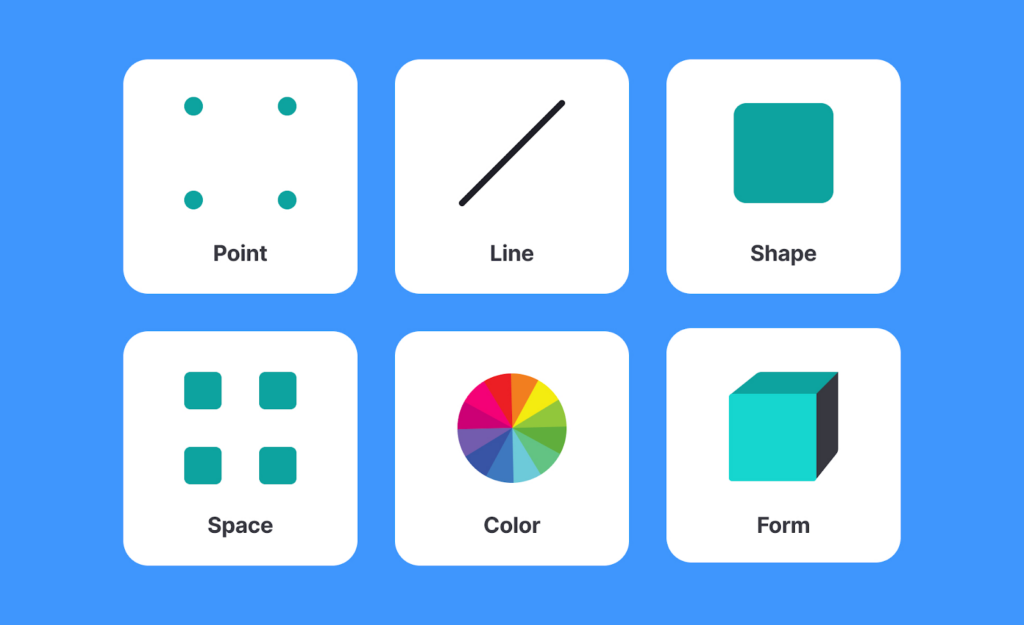
You’ve done the groundwork, and now comes the fun part—the design! But remember, design isn’t just about making things look pretty. Your redesign needs to work well and deliver an excellent user experience.
Mobile-First, Always
Here’s a fact: more than half of global web traffic comes from mobile devices. So if your website doesn’t work smoothly on mobile, you’re alienating a huge chunk of your audience. A responsive design beyond mobile ensures your site looks and functions beautifully on all screen sizes—from desktop to tablet to smartphone.
When redesigning:
- Make sure your images and text resize gracefully.
- Test how clickable buttons and links are on a smaller screen.
- Ensure that forms are easy to fill out on mobile devices.
Your goal is to create a seamless experience across all devices, so your visitors have a great time no matter where they’re browsing from.
Related: Difference Between A Mobile Site And A Responsive Site
Choose Themes That Are SEO and Speed Ninjas
Not all WordPress themes are created equal. Some are clunky and overloaded with features you don’t need, while others are streamlined for speed and SEO. When choosing a theme for your redesign, focus on the ones that offer both beauty and brawn.
Two top recommendations:
- Astra: Known for its fast loading times and flexibility, Astra is a lightweight theme that won’t weigh down your website. It’s fully customizable, SEO-friendly, and works well with most page builders like Elementor and Beaver Builder.
- GeneratePress: Another solid choice, GeneratePress is designed with performance in mind. It’s fast, secure, and fully responsive, making it perfect for both small blogs and large e-commerce stores.
Read: Fastest WordPress Themes
Implementing Your Website Redesign Without Breaking Anything

You’ve planned, prepped, and designed—now it’s time to bring it all to life. But here’s where things can go wrong if you’re not careful. Never implement a redesign directly on your live site. It’s like performing surgery in front of a crowd—not a good idea. Instead, use a staging site to test everything first.
Test Your New Site Like a Pro (Without Going Live)
A staging site is an exact copy of your live website where you can safely test changes without affecting your users. It’s a crucial step because any bugs, broken links, or slow load times need to be addressed before going live.
Most hosting providers (like DreamHost or Kinsta) offer easy-to-use staging environments. Alternatively, you can use a plugin like WP Staging to set one up yourself.
Test, Tweak, and Test Again
Testing is one of the most important steps before you hit that “go live” button. It’s like giving your site a test drive to make sure everything is running smoothly. Here’s what to check:
- A/B Testing: Compare two versions of your most important pages (like your homepage or landing pages) to see which one performs better in terms of conversions or user engagement.
- Usability Testing: Ask real users to navigate through your site. Their feedback will help you spot any confusing areas or user experience problems that need fixing before launch.
- Performance Testing: Use performance optimization tools to make sure your site loads quickly. Check for any lagging images, scripts, or elements that could be slowing things down.
Launch and Beyond: What Happens After the WordPress Site Redesign?

You’ve tested and tweaked, and now it’s finally time to launch. But remember, going live is just the beginning. You’ll need to monitor your new site, fix any post-launch bugs, and continue refining it to keep things running smoothly.
Launch Like a Boss (But with a Safety Net)
Before you flip the switch, make sure:
- All redirects are in place so old URLs point to the new ones.
- Google Search Console is updated with your new sitemap, so Google can crawl and index your new pages quickly.
- Maintenance mode is enabled during the transition so visitors don’t see a half-finished site.
If something does go wrong (and hey, it happens), you’ve got your backup ready to restore everything to its former glory. Crisis averted!
Explore: Why Do SEO with Website Redesign? (And How to Do It)
Post-Launch: Keep Tinkering
Once your site is live, keep an eye on its performance. Regularly check your analytics to see how visitors are interacting with your new design. Fix any issues that pop up, update plugins, and continue to optimize your content. Remember, a website is a living entity—it’s never truly “done.”
Find: Website Redesign: Signs You Need a Website Makeover
Conclusion: Make Your WordPress Redesign a Great Success
Redesigning your WordPress website doesn’t have to be stressful or overwhelming. With the right plan, a clear vision, and a step-by-step process, you can create a website that’s not only beautiful but also high-performing. Follow these steps, keep testing, and most importantly, stay focused on your goals. Soon enough, you’ll have a WordPress site that’s a true reflection of your brand, impressing visitors and boosting conversions.
Now, take a deep breath—you’ve got this!


